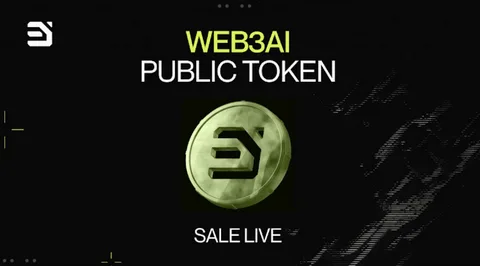Introduction
October has become a remarkable month for the cryptocurrency community, often nicknamed “Uptober” due to the historically bullish nature of the market during this period. In recent years, there has been a particular trend that’s grabbing the attention of investors and analysts alike: Bitcoin’s declining exchange holdings.
This reduction in Bitcoin supply on exchanges is often seen as a bullish signal, indicating that holders are moving their assets off exchanges, either for long-term storage or other decentralized applications. It’s a strong indicator of a strengthening market, as investors increasingly show confidence in holding Bitcoin, rather than selling it for short-term gains.
In this post, we will explore the fascinating correlation between Bitcoin’s declining exchange holdings and its impact on the broader market. We’ll dive into the factors behind this trend, why it’s significant for the crypto community, and what it might mean for Bitcoin’s price in the future. Welcome to Uptober—where the data points toward market optimism.

1. Uptober: The Month of Market Optimism
October has become one of the most anticipated months for Bitcoin investors, often resulting in positive market sentiment. Dubbed as “Uptober,” it refers to the historic trend of Bitcoin performing well during the tenth month of the year. While this trend isn’t a guarantee, there are multiple factors contributing to the consistent optimism during this month.
One of the standout trends in recent years has been Bitcoin’s declining exchange holdings. Exchange holdings refer to the amount of Bitcoin held on centralized platforms like Binance, Coinbase, and Kraken. When investors hold Bitcoin on these exchanges, it’s generally easier for them to sell their assets. However, a decline in exchange holdings often suggests that investors are moving their assets to offline wallets or decentralized platforms, signaling their intent to hold, rather than sell.
This trend is especially relevant during Uptober, as we often see a significant decline in exchange holdings leading into October, followed by price rallies. Investors recognize Uptober as a month where Bitcoin’s price tends to increase, so they are less likely to liquidate their holdings during this period. But what exactly is driving this behavior?
2. Bitcoin’s Declining Exchange Holdings: A Closer Look
The trend of Bitcoin’s declining exchange holdings has been consistent throughout much of 2023. According to data from blockchain analytics firms, the amount of Bitcoin held on exchanges has been steadily decreasing, even as the market experiences volatility. This trend could be attributed to a variety of reasons, each of which contributes to a strengthening market.
One of the primary reasons is the rise of decentralized finance (DeFi) and self-custody options. More and more investors are moving their Bitcoin to hardware wallets or decentralized protocols, where they can maintain full control over their assets. By taking Bitcoin off exchanges, investors signal that they have no immediate plans to sell, which reduces the available supply on the market. This, in turn, can lead to upward pressure on the price as demand outstrips supply.
In addition, institutional adoption has played a key role in Bitcoin’s declining exchange holdings. Large corporations and institutional investors are increasingly treating Bitcoin as a long-term store of value, much like gold.
These entities often prefer to store their Bitcoin in secure, offline wallets rather than keeping them on exchanges, which are more susceptible to hacking and security breaches. This institutional confidence in Bitcoin’s long-term prospects further strengthens the market, as these investors are less likely to sell in response to short-term price fluctuations.
Lastly, the regulatory landscape has also contributed to this trend. As governments around the world move to regulate cryptocurrencies more stringently, many investors feel safer keeping their assets in private wallets rather than on centralized exchanges, which could face sudden restrictions or crackdowns. The combination of these factors paints a picture of a strengthening market where Bitcoin’s declining exchange holdings signal long-term confidence from both retail and institutional investors.
3. Why Declining Exchange Holdings Matter for Bitcoin’s Price
So why does Bitcoin’s declining exchange holdings matter so much? To understand this, we need to consider the dynamics of supply and demand. When Bitcoin is moved off exchanges, it becomes less accessible for trading, particularly for quick, large-scale sell-offs. This creates a situation where there is less Bitcoin available on the open market, which can lead to price increases if demand remains steady or increases.
Bitcoin’s declining exchange holdings often correlate with reduced selling pressure, as investors holding their assets in private wallets are more likely to be in it for the long haul. They are less influenced by short-term market fluctuations and are more likely to hold onto their Bitcoin during periods of volatility, waiting for better market conditions. This behavior contributes to the notion of a strengthening market, as the reduced supply of Bitcoin on exchanges creates a more stable price floor.
Moreover, when Bitcoin is taken off exchanges, it reduces the risk of panic selling. During market downturns, one of the biggest contributors to price crashes is the sudden influx of Bitcoin being sold on exchanges, as traders panic and try to liquidate their positions. By reducing the number of Bitcoin on exchanges, the market is less prone to these large-scale sell-offs, creating a more resilient price structure.
Another important factor to consider is that declining exchange holdings may also indicate a maturing market. In the early days of Bitcoin, many investors treated it as a speculative asset, constantly buying and selling to take advantage of short-term price swings.
However, as the market has evolved, we’ve seen more and more investors treating Bitcoin as a store of value, much like gold. This shift in perception has led to a decrease in speculative trading and an increase in long-term holding, which contributes to Bitcoin’s stability and growth over time.
4. The Long-Term Implications of a Strengthening Market
Bitcoin’s declining exchange holdings are not just a short-term trend; they could have significant long-term implications for the market. One of the most important is that it signals increasing confidence in Bitcoin as a viable long-term asset.
When investors choose to hold their Bitcoin in private wallets or decentralized platforms, it shows that they believe in the asset’s long-term value and are willing to weather short-term volatility for the potential of long-term gains.
This growing confidence can have a snowball effect. As more investors take their Bitcoin off exchanges, the supply of available Bitcoin decreases, leading to potential price increases. This, in turn, could attract even more investors to the market, further driving up demand. Over time, this cycle of declining supply and increasing demand could push Bitcoin’s price to new heights, solidifying its position as a major asset class in the global financial system.
Additionally, Bitcoin’s declining exchange holdings could also reduce market manipulation. One of the criticisms of the cryptocurrency market has been its susceptibility to large-scale manipulation by whales—individuals or entities that hold a significant amount of Bitcoin. By reducing the amount of Bitcoin on exchanges, it becomes harder for these large players to manipulate the market through coordinated buying or selling. This leads to a more stable and fair market for all participants.
As we look ahead, it’s clear that Bitcoin’s declining exchange holdings are a key indicator of a strengthening market. Whether you’re a retail investor or an institutional player, the data suggests that the long-term outlook for Bitcoin is positive, with reduced supply, increased demand, and growing confidence all contributing to a more robust market.
Conclusion: What Uptober Tells Us About Bitcoin’s Future
Uptober has become synonymous with optimism in the Bitcoin market, and 2024 is shaping up to be no different. Bitcoin’s declining exchange holdings are a powerful signal of a strengthening market, indicating that investors are increasingly confident in Bitcoin’s long-term prospects.
With less Bitcoin available on exchanges, reduced selling pressure, and growing demand from both retail and institutional investors, the outlook for Bitcoin looks bullish as we head deeper into October and beyond.
As we’ve seen, the factors driving Bitcoin’s declining exchange holdings—from the rise of DeFi to institutional adoption—are creating a more stable and resilient market. For those who believe in the long-term value of Bitcoin, this is an encouraging sign that we may see further price appreciation in the months and years ahead.
If you’re interested in learning more about Bitcoin’s market trends or have any thoughts on Uptober, feel free to leave a comment below! Let’s keep the conversation going.






